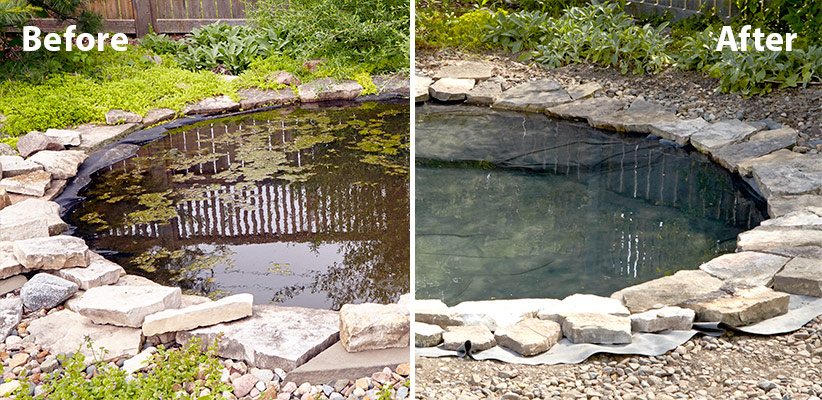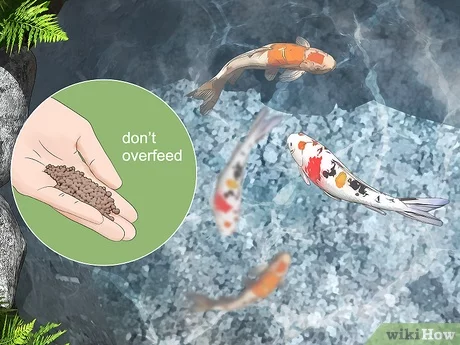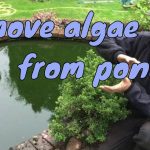Algae can be a common problem for pond owners, causing the water to become murky and green. Not only is this unsightly, but it can also be harmful to fish and other aquatic life. Fortunately, there are several methods that can help you eliminate algae from your pond and restore its beauty. In this article, we will discuss some effective ways to tackle algae growth and maintain a healthy pond ecosystem.
1. Install a Pond Filter
One of the most effective ways to control algae growth in your pond is by installing a pond filter. A good quality filter will help to remove excess nutrients from the water, which algae feed on. Be sure to choose a filter that is appropriate for the size of your pond and follow the manufacturer’s instructions for proper installation and maintenance.

Credit: www.gardengatemagazine.com
2. Increase Water Circulation
Another way to combat algae is by increasing water circulation in your pond. Stagnant water provides the perfect environment for algae to thrive, so consider adding a fountain, waterfall, or other water feature to keep the water moving. This will help to disrupt algae growth and promote a healthier pond ecosystem.

Credit: www.youtube.com
3. Add Aquatic Plants
Adding aquatic plants to your pond can also help to reduce algae growth. Plants such as water lilies, lotus, and water hyacinth can help to shade the water and compete with algae for nutrients. Be sure to choose plants that are suitable for your climate and pond size, and keep them well-maintained to maximize their algae-fighting benefits.
4. Use Barley Straw
Barley straw is a natural and effective way to control algae in ponds. When barley straw breaks down in the water, it releases compounds that inhibit algae growth. Simply place a bale of barley straw in your pond and allow it to float or sink. Be sure to replace the barley straw every few months for continued algae control.
5. Perform Regular Water Tests
Regular water testing is essential for maintaining a healthy pond environment and preventing algae outbreaks. Test the water for pH, ammonia, nitrites, and nitrates to ensure that the water quality is within acceptable levels. Make any necessary adjustments to keep the water chemistry balanced and prevent algae growth.
6. Limit Sunlight Exposure
Algae thrive in sunlight, so limiting the amount of sunlight that reaches your pond can help to control algae growth. Consider adding shade sails, floating plants, or strategically placed rocks to provide shade for your pond. This will help to prevent algae from photosynthesizing and multiplying rapidly.
7. Clean Debris Regularly
Leaves, twigs, and other organic debris can contribute to algae growth by releasing nutrients into the water. Regularly clean out any debris that accumulates in your pond to prevent it from decomposing and fueling algae growth. Use a skimmer net or pond vacuum to remove debris efficiently and keep your pond clean.
8. Use Algaecides Sparingly
While algaecides can be effective at eliminating algae, they should be used sparingly and as a last resort. Algaecides can harm fish and other aquatic life if used improperly, so be sure to follow the manufacturer’s instructions carefully. Consider natural alternatives such as barley straw or beneficial bacteria before resorting to chemical treatments.
9. Maintain a Balanced Ecosystem
Ultimately, maintaining a balanced ecosystem is key to preventing algae growth in your pond. Ensure that you have a good mix of plants, fish, and other aquatic life to help keep the pond in equilibrium. Avoid overfeeding fish, as uneaten food can contribute to algae growth, and monitor the water quality regularly to catch any issues early on.
Conclusion
Algae growth can be a common issue for pond owners, but with the right strategies and maintenance practices, it can be effectively controlled. By following the tips outlined in this article, you can eliminate algae from your pond and enjoy a clear and healthy water feature. Remember to be proactive in your approach to pond care and address any algae problems promptly to maintain a beautiful and thriving pond ecosystem.





